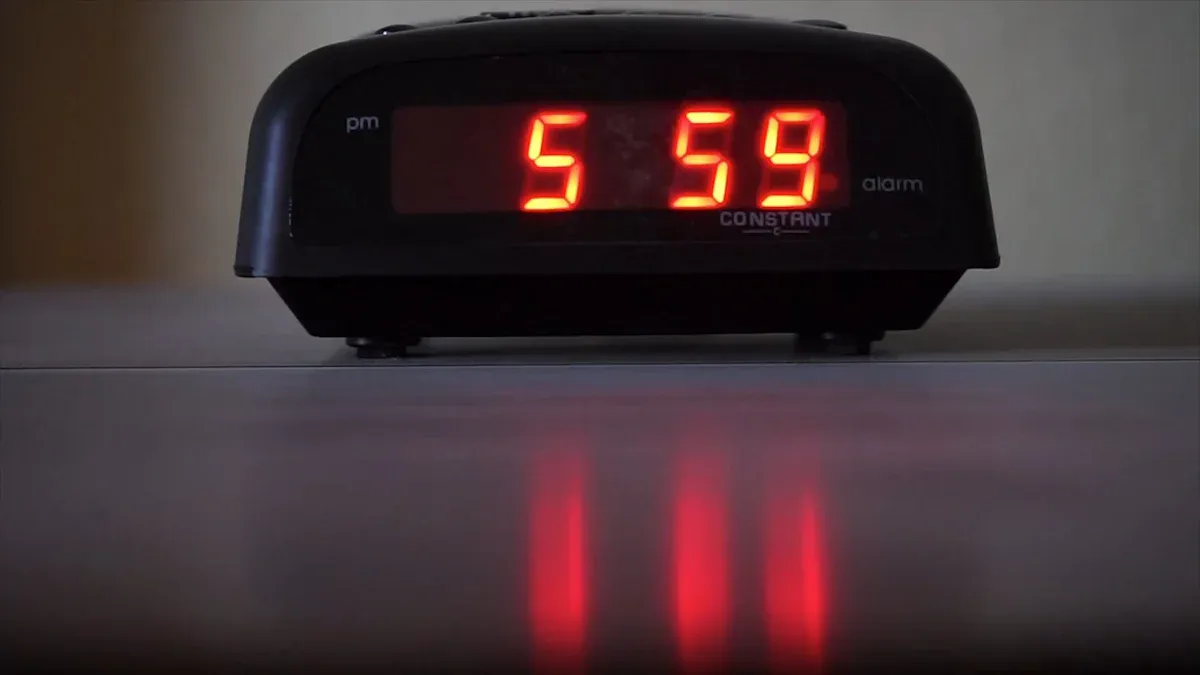Contents

Cold weather can challenge your battery’s performance. Maintaining a good battery temperature ensures reliability and extends its lifespan. Different battery types have specific temperature needs. For example:
Ideal Temperature Range | Characteristics | |
|---|---|---|
AGM (Absorbent Glass Mat) | Low temperatures | Prevents electrolyte thickening, ensuring reliable performance in freezing conditions. |
Lithium-ion | Low temperatures | Higher power density, maintains performance effectively in cold weather. |
Cold-cranking amps (CCA) | Freezing temperatures | Provides strong starting power, essential for engine starting in cold weather. |
Gel batteries | Extreme cold | Thickened electrolyte, consistent performance in cold conditions. |
Deep-cycle batteries | Cold weather usage | Designed for repeated deep discharges, reliable in marine and RV applications. |
Understanding these ranges helps you protect your battery temperature and avoid performance issues.
Key Takeaways
Warm up your battery before using it in cold weather. This keeps the charge temperature steady and works better.
Cover your battery with thermal wraps or use heated systems. This stops freezing and keeps it working well.
Keep batteries in a warm place when not using them. This helps them hold charge longer and last more years.
Why cold weather affects battery temperature

The science behind battery performance in cold weather
Cold weather significantly impacts how your battery operates. At low temperatures, the chemical reactions inside the battery slow down, reducing its ability to generate energy. For lithium-ion batteries, this means the movement of lithium ions becomes sluggish. Instead of transferring efficiently between the anode and cathode, some ions may coat the anode, increasing resistance and disrupting electricity flow. This process not only lowers power output but also affects charge acceptance.
Additionally, extreme cold can make internal components brittle. The separator, which prevents the electrodes from touching, may become compromised, leading to potential failure. These changes highlight why maintaining an optimal battery temperature is crucial for reliable performance.
Impact of cold on battery capacity and charging efficiency
When temperatures drop, your battery’s capacity and charging efficiency take a hit. Lithium-ion batteries, for example, can lose 20-30% of their rated capacity in cold conditions. This happens because the slowed ion movement reduces the battery’s ability to discharge energy effectively. Charging at low temperatures also poses risks. Rapid plating can occur, where lithium ions coat the anode instead of integrating properly, causing long-term damage.
Lead-acid batteries fare even worse, with only 45% of their capacity available at 0°F. This makes lithium-ion batteries a better choice for cold climates, as they retain higher discharge temperature performance.
Long-term effects of cold exposure on battery health
Repeated exposure to cold weather can harm your battery health over time. Physical changes, such as the contraction of internal components, hinder electron transfer. This can lead to the formation of lithium dendrites, which may cause permanent damage or even battery failure. While modern batteries are designed to withstand some cold, prolonged exposure without proper care can shorten their lifespan.
To protect your battery, focus on maintaining a stable temperature and avoiding extreme conditions. Proper storage and charging practices will help preserve its performance and longevity.
Tips to maintain good battery temperature
Preheat batteries before use
Preheating your battery before use can significantly improve its performance in cold weather. Cold temperatures slow down chemical reactions, reducing charge acceptance and power output. You can warm up your battery by placing it in a heated environment or using a battery warmer. For car batteries, starting the engine and letting it idle for a few minutes can help generate heat. This simple step ensures your battery operates closer to its optimal charge temperature, enhancing efficiency and extending battery life.
Use insulation to protect batteries from cold
Insulating your battery is one of the most effective ways to maintain a good battery temperature. Common materials for insulation include:
Thermal wraps made from foam, rubber, or aerogel.
Heated battery systems with built-in heating elements.
Insulated enclosures for larger battery systems.
These solutions prevent freezing and maintain stable internal temperatures, ensuring reliable performance even in extreme cold.
Avoid prolonged exposure to extreme cold
Minimizing your battery’s exposure to freezing temperatures is crucial. Cold weather can cause rapid plating, which damages the battery and reduces charge acceptance. Keep your car in a garage or use a thermal cover to shield the battery from cold winds. Regularly driving longer distances also helps recharge the battery fully, preventing capacity loss.
Charge batteries in a warm environment
Charging your battery in a warm environment offers several benefits:
Warmer temperatures speed up chemical reactions, improving charge acceptance.
It prevents irreversible damage caused by charging in cold conditions.
Maintaining a mild charge temperature prolongs battery life.
Avoid charging your battery outdoors in freezing weather. Instead, bring it indoors or use a heated charging station to ensure optimal performance.
Store batteries at room temperature when not in use
When storing batteries, aim for a room temperature of around 59°F (15°C). This range helps maintain charge capacity and prevents damage caused by extreme cold. Always store batteries in a dry, insulated space to protect them from temperature fluctuations. Proper storage practices ensure your battery remains ready for use and extends its lifespan.
Devices and tools to maintain battery temperature

Battery warmers and thermal wraps
Battery warmers and thermal wraps are excellent tools to keep your battery functioning in cold weather. Warmers, such as blanket-style heaters or thermostat-controlled models, maintain the battery’s core temperature, ensuring optimal performance. For example:
Battery Warmer Type | Key Features |
|---|---|
Blanket Style Battery Heater | Warms battery core to 60° – 70°F above ambient temperature, Thinsulate™ insulation, 120 Volt AC. |
Thermostat Model | Thermostatically controlled, operates between 60°F and 80°F, available in multiple lengths. |
Battery Box Heater | Maintains 80°F battery warmth, metal outer shell, fits in battery box, available in 120 or 240 AC. |
BH-3100 Series | Circulates warm coolant, fits all Group 31 configurations, durable stainless steel tubes. |
Thermal wraps, on the other hand, provide insulation to stabilize the battery’s temperature. They prevent critically low temperatures that could cause permanent damage. Battery blankets, specifically designed for automotive batteries, ensure reliable functionality in extreme conditions.
Temperature monitoring apps for batteries
Temperature monitoring apps help you track your battery’s temperature in real time. These apps offer features like accurate temperature measurement, alarm triggers for anomalies, and overtemperature protection. Some advanced apps monitor multiple temperature points and include independent validation systems to ensure performance. Using these tools, you can prevent overheating or freezing, which helps extend battery life.
Cold-weather portable power banks
Cold-weather portable power banks are ideal for outdoor activities in winter. These power banks often come with IP65 certification, making them resistant to water and dust. Their robust housing protects against impacts and drops, ensuring durability during hiking or camping. Some models even allow battery replacement, offering reliability for extended trips. These features make them a practical choice for maintaining your battery’s charge in harsh conditions.
Winter-specific tools for car batteries
Winter-specific tools can help you maintain your car battery’s performance. A trickle charger keeps the battery charged during storage, preventing freezing. A hydrometer measures the specific gravity of the electrolyte, while a digital DC voltmeter checks voltage levels. When replacing your car battery, consider one with a high Cold Cranking Amps (CCA) rating for reliable starts in freezing temperatures. These tools ensure your battery stays functional throughout the winter months.
FAQ
How can you tell if your battery is too cold to function properly?
Look for signs like reduced power output, slower charging, or failure to start. A temperature monitoring app can help you check the battery’s current condition.
Can you charge a frozen battery?
Tip: Never charge a frozen battery. Thaw it first in a warm environment. Charging while frozen can cause internal damage and reduce its lifespan.
What is the best way to store batteries during winter?
Store batteries in a dry, insulated space at room temperature. Avoid extreme cold or heat. Use a battery maintainer to keep them charged if not in use.





